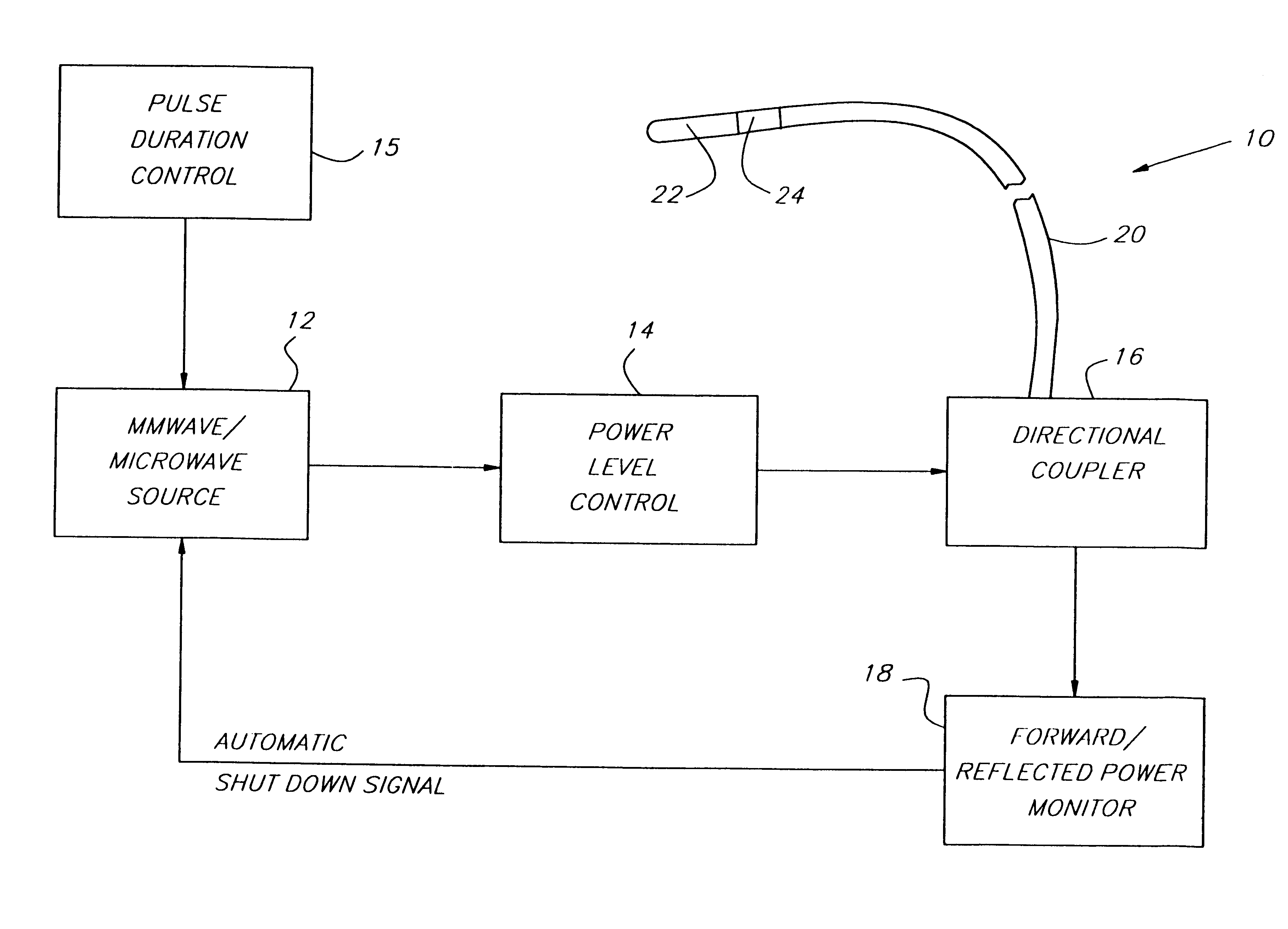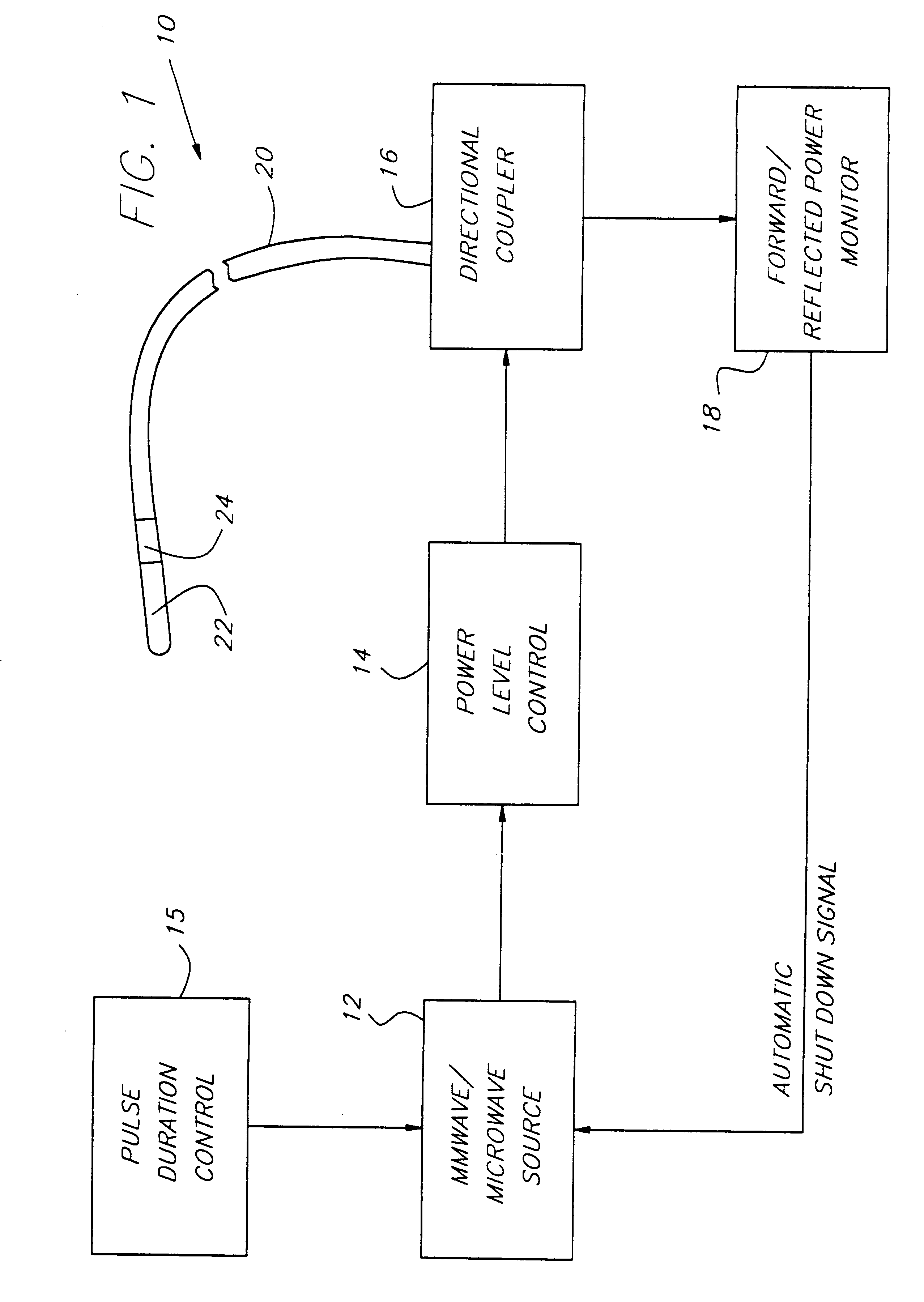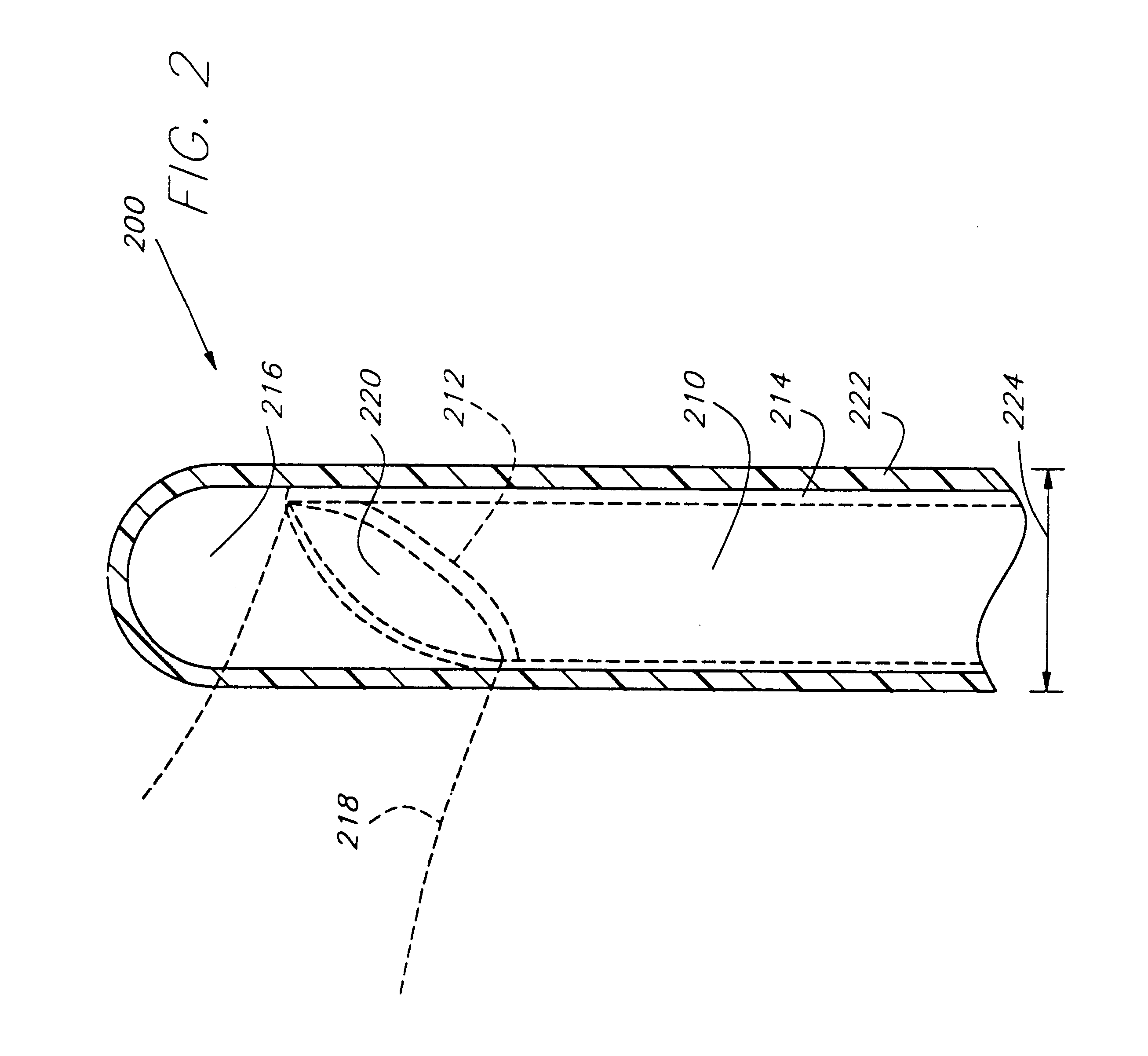Endothelium preserving microwave treatment for atherosclerois
a technology of atherosclerois and microwave treatment, which is applied in the field of endothelium preserving microwave treatment for atherosclerois, can solve the problems of gross trauma that severely injures the endothelium or lining of the artery, treatment is sometimes considered to be insufficiently effective for increasing blood flow, and the effect of increasing blood flow is not enough
- Summary
- Abstract
- Description
- Claims
- Application Information
AI Technical Summary
Benefits of technology
Problems solved by technology
Method used
Image
Examples
Embodiment Construction
The techniques of the present invention are designed to treat atherosclerosis without damaging the important endothelial layer. Once the catheter is positioned, the heating of the atherosclerotic lesion takes little time, in some cases less than one-half second. The power levels are low--in the range of about 1 watt. The catheter is designed to operate while blood continues to flow through the artery. A temperature profile is produced in the arterial wall that necroses or ablates connective tissue, softens waxes and fats, and allows the arterial pressure to more gently act to dilate the artery. Frequency of the radiation has a significant affect on the depth of maximum energy deposition. The beamwidth can be selected to be in accord with the size of the lesion. Where the lesion(s) are asymmetrically disposed in a specific arc of the arterial wall, the energy is directed toward the arc and the anole of focus for the radiator can be adjusted accordingly. This provides much more effici...
PUM
 Login to View More
Login to View More Abstract
Description
Claims
Application Information
 Login to View More
Login to View More - R&D
- Intellectual Property
- Life Sciences
- Materials
- Tech Scout
- Unparalleled Data Quality
- Higher Quality Content
- 60% Fewer Hallucinations
Browse by: Latest US Patents, China's latest patents, Technical Efficacy Thesaurus, Application Domain, Technology Topic, Popular Technical Reports.
© 2025 PatSnap. All rights reserved.Legal|Privacy policy|Modern Slavery Act Transparency Statement|Sitemap|About US| Contact US: help@patsnap.com



